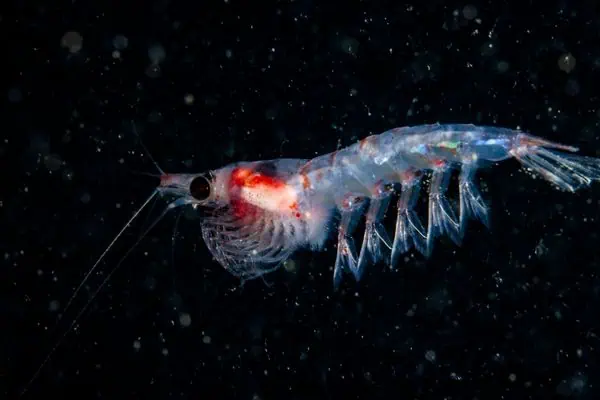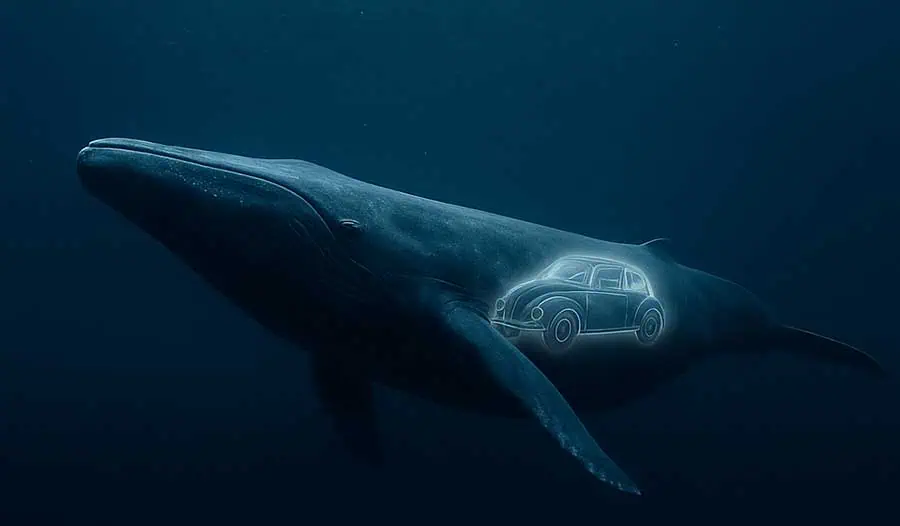If you want the most astonishing facts about blue whales, this list delivers. Blue whales are the largest animals to ever live, and nearly every part of their biology pushes the limits of what a mammal can do. From a heart the size of a small car to calves that gain hundreds of pounds a day, these giants turn the ocean into a stage for extreme biology.
1) The largest animal to ever exist
Adult blue whales commonly reach 80 to 100 feet in length, with the biggest individuals longer than a full basketball court. Their mass can approach 150 to 200 tons, which is roughly the weight of 30 or more adult African elephants.
They are larger than any dinosaur discovered to date. Park a standard 40 foot school bus beside a big blue whale and the whale still wins for length, girth, and overall scale. Every organ and system inside is sized for moving a living mountain through water.
2) A heart about the size of a small car
A blue whale’s heart can weigh several hundred pounds and is powerful enough to push thousands of gallons of blood every hour. The aorta is wide compared to many household objects, moving a steady river of blood to fuel dives and long migrations.
At depth, the heartbeat slows to only a few beats per minute to conserve oxygen. Near the surface it increases while the whale breathes and restores oxygen to its body. That slow to fast cycle keeps a multi ton body running smoothly on long dives.
3) A tongue that weighs like an elephant
The tongue of a blue whale can weigh around 2 to 3 tons. That single muscle outweighs a rhinoceros and is heavier than many compact cars.
During feeding, the tongue acts like a hydraulic press. After a lunge the whale forces water back out through the baleen while thousands of krill remain trapped inside the mouth, ready to swallow.
4) Calves are born huge and gain over 200 pounds a day
Newborn blue whales measure about 20 to 25 feet and already weigh several thousand pounds. They can swim shortly after birth and begin nursing almost immediately.
The milk is extremely rich, often near half fat. That concentrated nutrition helps calves add roughly 200 pounds per day in the first weeks. In human terms that is like a newborn gaining the weight of an adult person every week.
5) Among the lowest, far traveling voices in the ocean
Blue whales produce very low frequency calls that fall below what most people can easily hear. Low frequencies travel efficiently through seawater, so these calls can carry across great distances.
Researchers think whales use these deep notes to contact other whales far away, coordinate movements, and possibly help with navigation. In the quiet low frequency band, a single call can cut through background noise for dozens or even hundreds of miles.
6) They eat tiny prey in massive quantities
Despite their size, blue whales specialize in krill, which are shrimp like crustaceans only a few centimeters long. During peak feeding they can consume several tons of krill in a single day.
Feeding is done with lunge filter behavior. The whale accelerates, opens its mouth wide, and engulfs a volume of water and prey comparable to a small swimming pool. Water exits through baleen and the dense mouthful of krill is swallowed.

7) Migrations that span ocean basins
Many blue whales migrate seasonally between cold feeding grounds and warmer breeding areas. These routes can run for thousands of miles, linking polar or subpolar zones to subtropical waters.
They build fat reserves in productive summer waters when krill blooms peak, then travel to calve and mate where seas are calmer and temperatures are higher. It is a marathon that repeats year after year.
8) Long lived and among the longest living whales
Blue whales often live for many decades. Estimates commonly place lifespans around 70 to 90 years, and some individuals likely pass 100 making them one of the longest living whales on earth.
Scientists estimate age by reading growth layers in earwax plugs, which build up like tree rings. Each layer marks a chapter in a whale’s life and helps reveal how long these giants endure.
9) Bigger even than other great whales
Humpback whales are impressive at 40 to 50 feet, yet a mature blue whale can be longer by dozens of feet and many times heavier. Even a sperm whale, famous for deep diving and large heads, is far shorter and lighter than a big blue.
Imagine a humpback breaching beside a boat. Now scale that image up to a blue whale and the size difference becomes obvious. The blue whale occupies a category of its own.
10) A blow like a vertical geyser and billboard wide flukes
When a blue whale exhales, the blow can rise 30 feet or more as a tall, narrow column of mist. Experienced observers can often identify the species from that blow height and shape alone.
The tail flukes can span well over 20 feet. When a whale lifts its flukes to dive, the spread looks like a two story signboard tipping up before it slips beneath the surface.
11) Baleen combs that sift food with precision
Instead of teeth, blue whales carry long plates of baleen that hang from the upper jaw. Each plate has a bristled fringe that acts like a fine mesh filter.
After a lunge, the whale presses water out through the baleen while krill remain behind. The system runs on keratin, the same material as hair and fingernails, yet it handles tons of water with every feeding event.
12) Streamlined bodies for efficient travel and quick bursts
The smooth, torpedo shaped body of a blue whale reduces drag and conserves energy during long swims. Throat pleats expand during lunges, then lie flat to restore a sleek profile.
Although they cruise at modest speeds, blue whales can produce short bursts fast enough to surprise boats and outrun surface conditions when necessary. Efficiency is the default, but power is available on demand.
13) A coat that can look blue, gray, or even yellow
Blue whales often appear mottled blue gray underwater. In bright light they can look slate gray, while certain angles produce a steel blue sheen that likely inspired their common name.
Some individuals carry a yellowish tint on the belly from a film of microscopic algae on the skin. That look led to the old nickname sulfur bottom in parts of the world.
14) Calving and parenting at ocean scale
Blue whale mothers usually give birth to a single calf after a gestation of almost a year. The newborn swims close to the mother and learns to draft in her slipstream to save energy during long swims.

The pair travels together through open ocean, navigating thousands of miles while the calf learns to surface for air, avoid predators, and feed. Growth is rapid and constant as the calf prepares for independent travel.
15) Hunted to the brink, now slowly recovering
Industrial whaling in the 20th century reduced blue whale numbers to a fraction of their former population. International protections arrived late but helped halt the decline.
Global conservation, speed restrictions in some shipping lanes, and awareness of entanglement risks are helping. Some populations show gradual increases, although ship strikes, noise, and fishing gear still pose threats.
WildlifeInformer.com is your #1 source for free information about all types of wildlife and exotic pets. We also share helpful tips and guides on a variety of topics related to animals and nature. Subscribe on YouTube for videos.

